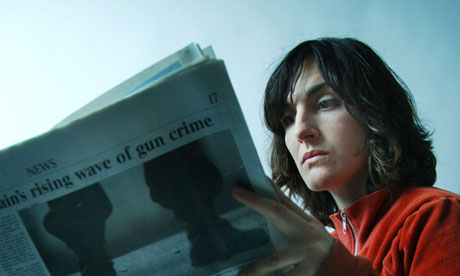
There was quite the bombshell in the news this week. It turns out that, contrary to expectations, women don't look their oldest in their 80s or 90s. No, the Telegraph reveals, they look oldest at 3.30pm on a Wednesday.
Except, utterly obviously, they don't. The story is the latest in a stream of "polls", "surveys" or "research" designed to do nothing but promote a company's new product.
In this case, it worked nicely. The story's fifth paragraph notes the "study" was "carried out by the tanning brand, St Tropez". Paragraph seven quotes a "St Tropez skin expert", who proceeds to talk about "toxins" lurking in the body – "toxins" being a classic pseudoscience term.
Later in the piece, St Tropez's expert is given a chance to discuss how "it's essential to cleanse the face of build-up from everyday pollution", and the article notes "15 per cent of women begin using anti-ageing products between the age of 21 and 25 – which proves to be an important weapon against ageing".
St Tropez even gets a specific mention for the exact product they promote at the article's close: "The research was carried out to support the launch of St Tropez Gradual Tan Plus Anti-Ageing Face".
Did St Tropez offer the Telegraph a difficult and exclusive story it couldn't get in any other way? Of course not – there's plenty that can be said on these topics. For example, one (scientific) study suggests women's concern about their appearance and aging is higher for divorced, younger women, and also correlates with bad relationships. And more concern about appearance is, unsurprisingly, a predictor of mental health consequences.
We could explore all of these things – but, of course, it's much easier (and more fun) to run some PR guff instead.
It would be utterly unfair to single out the Telegraph in any way for this kind of behaviour, though. These stories make it into every UK outlet – including, at times, this one – but some are worse than others.
Take a piece from the Mail last June: "More than 40% of women under 30 admit to having one-night stands on holiday". Even if it weren't for everything else wrong with the piece – of which more later – the figure is very dubious: multiple pieces of research consistently suggest fewer than 15% of women aged 15-44 have more than one sexual partner in any given year (the figure for men is similar).
But it's much worse than that: the "study" is a survey of the (claimed) "30,000 female British members" of a site aiming to offer women free holidays with wealthy men. How they're expected to repay those gents for their kindness is left to their imagination. As is why the "family newspaper" that leads the UK in stirring moral panics promotes such a site.
Such nonsense stories are the product of a broken industry operating by broken rules: some minor transgressions engender draconian punishment; some major errors, nothing.
If a newspaper article suggests a sportsman is definitely, rather than probably, a cheat, it can cost millions in libel actions. Suggesting through sloppy phrasing that a multinational corporation's elaborate tax minimisation scheme is illegal, rather than just immoral, could cost far more.
Writing a nonsense story on a serious issue, though, costs nothing. And the consequence is there's a plethora of them – particularly (but by no means exclusively) on health.
Depression affects millions of people in the UK each year, and is tied to a considerable number of the UK's 50,000 suicides in the last decade. Each year, the media offer a nonsense "Blue Monday" story, plugged by PR, on the "most depressing day of the year".
Another example is the sustained campaign over years of nonsense stories on the MMR vaccine, extrapolating wildly from a single, discredited study, which have led to lower vaccination rates, a loss of herd immunity among children, and the resurfacing of potentially deadly childhood illnesses.
There is plenty of room for light, fun pieces across newspapers. The issue comes when this casual, easygoing attitude towards numbers, statistics and the world at large extends into serious issues. PR stories are one of the most common manifestations of this syndrome, but far from the only one.
It seems we're in an environment where media organisations are increasingly willing to run stories that don't make sense, pushed by commercial interests.
Such behaviour could easily be portrayed as the desperate flailing of a dying industry. But perhaps a worse prospect is that it's the shape of things to come.

